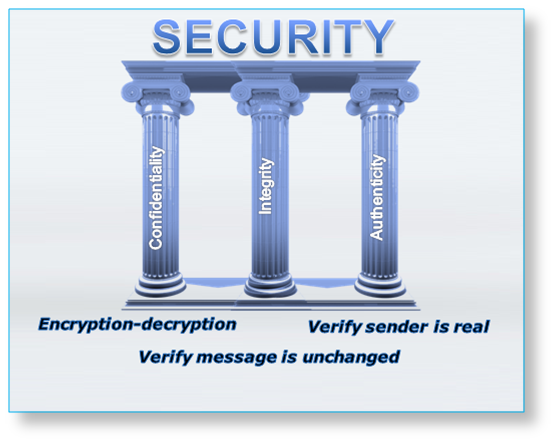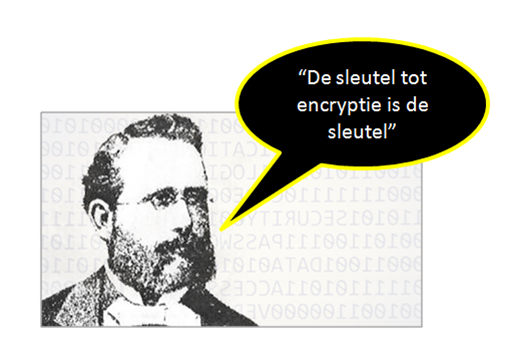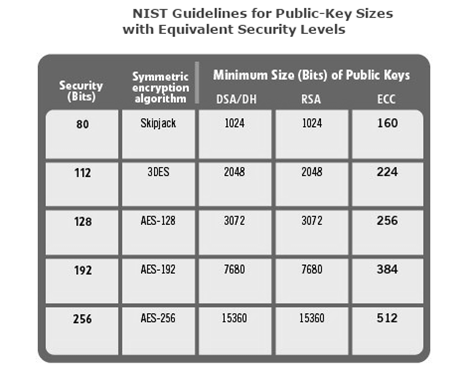With the emergence of breaches and vulnerabilities, the need for hardware security has never been so paramount.
Confidentiality — one of the three foundational pillars of security, along with data integrity and authenticity — is created in a digital system via encryption and decryption. Encryption, of course, is scrambling a message in a certain way that only the intended party can descramble (i.e. decrypt) it and read it.
Throughout time, there have been a number of ways to encrypt and decrypt messages. Encryption was, in fact, used extensively by Julius Caesar, which led to the classic type of encryption aptly named, Caesar Cipher. The ancient Greeks beat Caesar to the punch, however. They used a device called a “Scytale,” which was a ribbon of leather or parchment that was wrapped around a rod of a diameter, of which only the sender and receiver were aware. The message was written on the wrapping and unfurled, then sent to the receiver who wrapped on on the rod of the same diameter in order to read it.
Modern Encryption
Modern encryption is based on published and vetted digital algorithms, such as Advanced Encryption System (AES), Secure Hashing Algorithms (SHA) and Elliptic Curve Cryptography (ECC), among many others. Given that these algorithms are public and known to everyone, the security must come from something else — that thing is a secret cryptographic “key.” This fundamental principal was articulated in the 19th century by Auguste Kerckhoffs, a Dutch linguist, cryptographer and professor.
Kerckhoffs’ principle states that a cryptosystem should be secure even if everything about the system, except the key, is public knowledge. In other words: “The key to encryption is the key.” Note that Kirchoffs advocated what is now commonly referred to as “open-source” for the algorithm. Point being, this open-source method is more secure than trying to keep an algorithm itself obscured (sometimes called security by obscurity). Because the algorithms are known, managing the secret keys becomes the most important task of a cryptographer. Now, let’s look at that.
Symmetric and Asymmetric
Managing the key during the encryption-decryption process can be done in two basic ways: symmetric and asymmetric. Symmetric encryption uses the identical key to both encrypt and decrypt the data. Symmetric key algorithms are much faster computationally than asymmetric algorithms because the encryption process is less complicated. That’s because there is less processing involved.
The length of the key size directly determines the strength of the security. The longer the key, the more computation it will take to crack the code given a particular algorithm. The table below highlights the NIST guidelines for key length for different algorithms with equivalent security levels. You can see that Elliptic Curve Cryptography (ECC) is a very compact algorithm. It has a small software footprint, low hardware implementation costs, low bandwidth requirements, and high device performance. That is one of the main reasons that ECC-based asymmetric cryptographic processes, such as ECDSA and ECDH, are now being widely adopted. The strength of the sophisticated mathematics of ECC are a great ally of all three pillars of security, especially encryption.
Not only is symmetric faster and simpler; furthermore, a shorter key length can be used since the keys are never made public as is the case with asymmetric (i.e. Public Key Infrastructure) encryption. The challenge, of course, with symmetric is that the keys must be kept secret on both the sender and receiver sides. So, distributing a shared key to both sides is a major security risk. Mechanisms that maintain the secrecy of the shared key are paramount. One method for doing this is called Symmetric Session Key Exchange.
Asymmetric encryption is different in that it uses two mathematically related keys (a public and private key pair) for data encryption and decryption. That takes away the security risk of key sharing. However, asymmetric requires much more processing power. Unlike the public key, the private key is never exposed. A message that is encrypted by using a public key can only be decrypted by applying the same algorithm and using the matching private key.
A message that is encrypted by using the private key can only be decrypted by using the matching public key. This is sort of like mathematical magic. Some of the trade offs of symmetric and asymmetric are summarized below.
Symmetric
- Keys must be distributed in secret
- If a key is compromised the attacker can decrypt any message and/or impersonate one of the parties
- A network requires a large number of keys
Asymmetric
- Around 1000 times slower than symmetric
- Vulnerability to a “man-in-the-middle” attack, where the public key is intercepted and altered
Due to the time length associated with asymmetric, many real-world systems utilize combination of the two, where the secret key used in the symmetric encryption is itself encrypted with asymmetric encryption, and sent over an insecure channel.Then, the rest of the data is encrypted using symmetric encryption and sent over the insecure channel in the encrypted format. The receiver gets the asymmetrically encrypted key and decrypts it with his private key. Once the receiver has the symmetric key, it can be used to decrypt the symmetrically encrypted message. This is a type of key exchange.
Note that the man in the middle vulnerability can be easily addressed by employing the other pillar of security; namely authentication. Crypto engine devices with hardware key storage, most notably Atmel’s CrypotoAuthentication, have been designed specifically to address all three pillars of security in an easy to design and cost-effective manner. Ready to secure your next design? Get started here.





Steve,
Congrats, very good article.
Just one comment, according FIPS 199 the three main security objectives are Confidentiality, Integrity and Availability. According Stallings Authenticity and Accountability are concepts under discussion. Why you have used Authenticity instead of Availability ?
Regards,
Rogerio
LikeLike